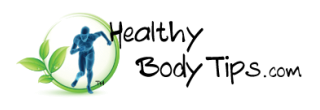Men’s Health
The general topic of men’s health is quite broad and can include issues that are part of women’s health too. Good examples here are cardiovascular wellbeing and weight loss. However, prostate health and conditions such as erectile dysfunction (ED) are peculiar to men.
In men, vascular health and sexual function are very closely related. Erectile dysfunction not only adversely affects intimate relationships but it may also indicate potential cardiovascular health problems. In many cases, erectile difficulties may be a sign of an underlying cardiovascular disorder. Because vascular health reflects erectile function, it’s not surprising that nutritional supplement ingredients that support healthy erectile performance may also contribute to our cardiovascular health.
Supplements that are intended to combat erectile dysfunction (ED) usually contain ingredients that may support optimal nitric oxide (NO) levels in the body. Nitric oxide relaxes blood vessels to facilitate improved blood flow. The amino acid arginine is well known for its cardiovascular benefits primarily because of its conversion to nitric oxide (NO) in our endothelial cells that line the internal surfaces of arteries. Increased vascular smooth muscle relaxation and the resulting improved blood flow to erectile tissue are due to enhanced nitric oxide (NO) production. It has been shown that oral arginine supplementation supports erectile function when compared with placebo (1).
Horny goatweed (Epimedium sagittatum) has been used in Traditional Chinese Medicine for centuries because of its aphrodisiac effects and support of erectile health. Scientists have isolated and characterized icariin and have shown this flavonoid derivative to be the major Viagra-like active component (2). Recent research has demonstrated that icariin selectively inhibits phosphodiesterase type 5 (PPE-5), an enzyme that causes a rapid termination of male sexual activity. By blocking this enzyme, sexual activity in men is sustained. Additionally, icariin enhances the production of NO from arginine. As we now know, increased production of NO by cells in the arterial wall results in dilatation of the penile blood vessels, which increases blood flow and maintains erectile function. This mechanism of action for natural icariin is amazingly similar to that of synthetic Viagra (3).
Other herbs and nutrients have a long history of safe and effective use in erectile dysfunction (ED) and complement the actions of arginine and horny goatweed. These include maca root or Peruvian ginseng (Lepidium meyenii), yohimbe root bark (Pausinystalia yohimbe) and DHEA (dehydroepiandrosterone). All three of these ingredients act as aphrodisiacs and are noted for their erectile and sexual health benefits in men.
Another men’s health issue that is fairly widespread in men is enlarged prostate or benign prostatic hyperplasia (BPH). Keep in mind that benign prostatic hyperplasia (BPH) is not prostatic cancer but it can be bothersome. Men usually know when they encounter benign prostatic hyperplasia (BPH) because of difficult urination and frequent nocturnal urination. The currently accepted and most plausible theory supporting the etiology of benign prostatic hyperplasia (BPH) centers on prostatic testosterone and its excessive conversion to the more potent dihydrotestosterone (DHT). The enzyme 5-alpha reductase catalyzes this conversion and once formed, dihydrotestosterone (DHT) stimulates the proliferation of prostatic cells. It appears logical that high levels of dihydrotestosterone (DHT) leads to excessive numbers of prostatic cells, which can result in an enlarged prostate.
Saw palmetto (Serenoa repens) is the most popular and best understood ingredient that provides benefit in cases of benign prostatic hyperplasia (BPH). The lipophilic (fat soluble) fraction from saw palmetto berries is most active and it appears that fatty acids from this fraction inhibit 5-alpha reductase to lower prostate levels of DHT. The bark of the African plum tree (Pygeum africana) has also shown significant benefit in cases of BPH. Evidence suggests that pygeum bark actives may inhibit growth factors that contribute to prostate cell growth and the resulting hyperplasia. Also, there is evidence that points to pygeum actives having anti-inflammatory activity in the enlarged prostate (4). A third herbal ingredient that has shown value in relieving benign prostatic hyperplasia (BPH) is the root of stinging nettle (Urtica dioica). Research on the root extract is not definitive but seems to suggest an anti-inflammatory effect as well as an interference with proliferation of prostatic epithelial cells. Interestingly, the root contains an active(s) that blocks the binding of prostatic androgens, testosterone and DHT, to an essential binding globulin (5). There have been anecdotal reports of the carotenoid lycopene and the mineral zinc producing prostate health benefits.
Maintenance of men’s health is an important priority and should not be ignored. Several nutritional approaches that offer meaningful benefit are available. My belief and the long-standing goal of all should be to optimize the proper functioning of all body systems and to preserve their highest achievable health. These beliefs must be embraced and the goals can and should be achieved.
Created by Dr. William J. Keller
Suggested Formulas & Supplements
Available Here…
References:
Melman A. This month in investigative urology. L-arginine and penile erection. Journal of Urology. 1997 Sep;158(3 Pt 1):686.
Dell’Agli M, et al. Potent inhibition of human phosphodiesterase-5 by icariin derivatives. Journal of Natural Products. 2008 Sep;71(9):1513-7.
Abstract available at: http://www.ncbi.nlm.nih.gov/pubmed/18778098
Xu, HB, Huang ZQ. Icariin enhances endothelial nitric-oxide synthase expression on human endothelial cells in vitro. Vascular Pharmacology. 2007 Jul;47(1):18-24.
Abstract available at: http://www.ncbi.nlm.nih.gov/pubmed/17499557
Levin, RM, Levin SS, Zhao Y, Buttyan R. Cellular and molecular aspects of bladder hypertrophy. European Urology. 1997;32 Suppl 1:15-21.
Abstract available at: http://www.ncbi.nlm.nih.gov/pubmed/9218938
Jellin, J. 2010 Natural Medicines Comprehensive Database, 12 ed. pp 1592-1595.

